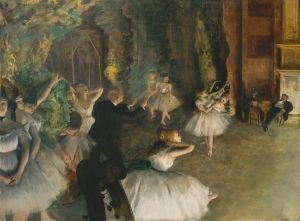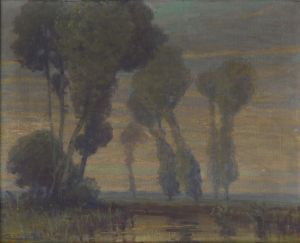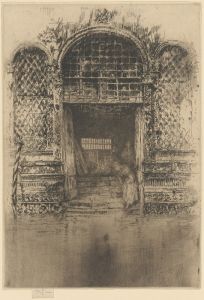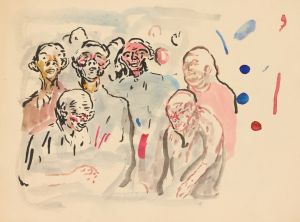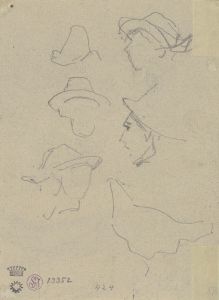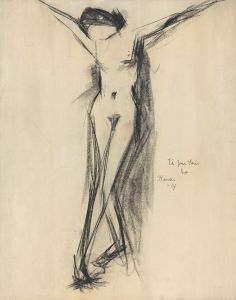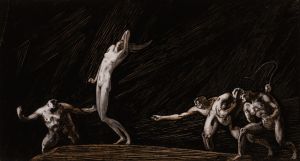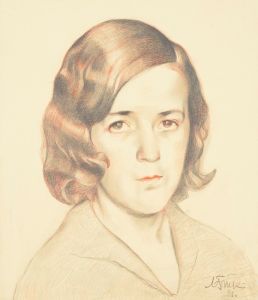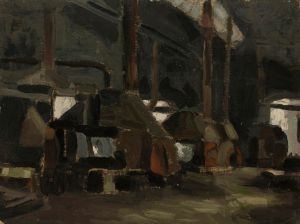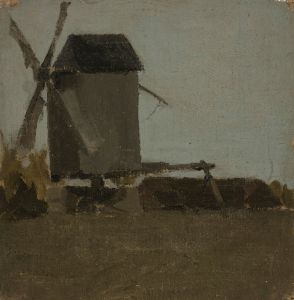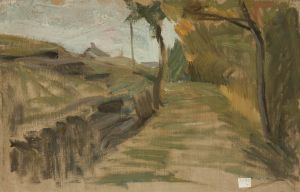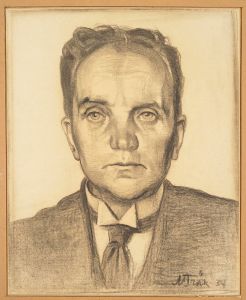
Pr. M. Konik haigevoodis
A hand-painted replica of Nikolai Triik’s masterpiece Pr. M. Konik haigevoodis, meticulously crafted by professional artists to capture the true essence of the original. Each piece is created with museum-quality canvas and rare mineral pigments, carefully painted by experienced artists with delicate brushstrokes and rich, layered colors to perfectly recreate the texture of the original artwork. Unlike machine-printed reproductions, this hand-painted version brings the painting to life, infused with the artist’s emotions and skill in every stroke. Whether for personal collection or home decoration, it instantly elevates the artistic atmosphere of any space.
Nikolai Triik was an Estonian painter and graphic artist, known for his contributions to the development of modern art in Estonia during the early 20th century. Born on August 7, 1884, in Tallinn, Triik studied art in Saint Petersburg, Russia, and later in Paris, France, where he was influenced by various modernist movements, including Symbolism and Expressionism. His works often reflect a synthesis of these styles, characterized by bold colors, dynamic compositions, and a focus on emotional expression.
One of Triik's notable works is "Pr. M. Konik haigevoodis," which translates to "Mrs. M. Konik in a Sickbed." This painting is a poignant example of Triik's ability to convey deep emotion and psychological depth through his art. While specific details about the painting's creation and its current location are limited, it is known that Triik often drew inspiration from his personal life and the people around him, suggesting that the subject of this painting may have been someone close to him.
The painting likely depicts a woman, Mrs. M. Konik, in a state of illness, capturing a moment of vulnerability and introspection. Triik's use of color and form in this work would have been intended to evoke empathy and convey the emotional weight of the scene. His style often involved a combination of realistic and abstract elements, allowing him to explore the inner experiences of his subjects beyond their physical appearances.
Triik's work, including "Pr. M. Konik haigevoodis," is significant in the context of Estonian art history as it represents a shift towards modernism and a break from traditional academic art. During the early 20th century, Estonia was undergoing significant cultural and political changes, and artists like Triik played a crucial role in shaping a new national identity through their innovative approaches to art.
Throughout his career, Triik was involved in various artistic groups and movements, including the Noor-Eesti (Young Estonia) movement, which aimed to promote modernist ideas and cultural renewal in Estonia. His contributions to Estonian art were not limited to painting; he was also an accomplished graphic artist and illustrator, known for his work in book design and printmaking.
Nikolai Triik's legacy is preserved in several Estonian museums, including the Art Museum of Estonia, which houses a collection of his works. His influence extends beyond his lifetime, as he paved the way for future generations of Estonian artists to explore new artistic expressions and engage with international art movements.
In summary, "Pr. M. Konik haigevoodis" by Nikolai Triik is a testament to the artist's skill in capturing human emotion and his role in the evolution of modern art in Estonia. While specific details about the painting are scarce, its significance lies in its representation of Triik's broader artistic vision and his impact on the cultural landscape of his time.





